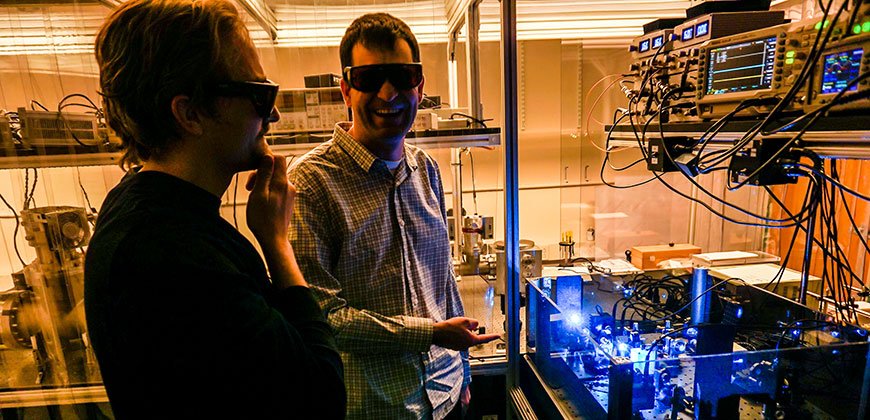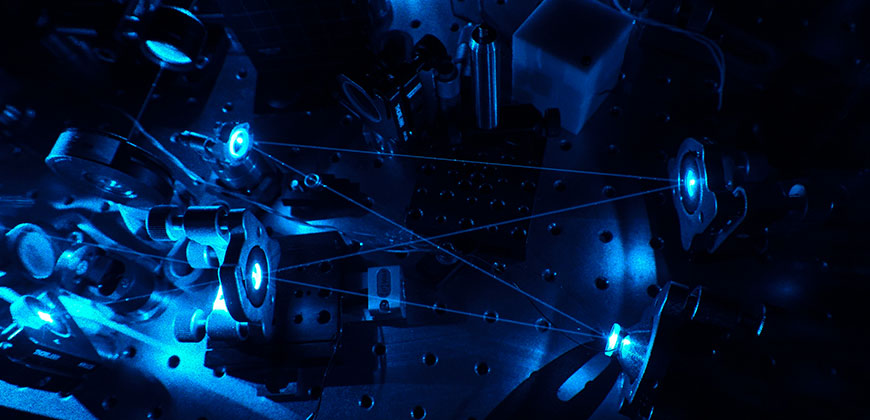
Graduate student Zak Burkley and Assistant Professor Dylan Yost in Yost’s physics building laboratory.
In the basement of the Colorado State University physics wing, it is not unusual to encounter labs filled with lasers. But not all of them are focusing their beams on the goal of creating super-cooled hydrogen – and unlocking some of the biggest theoretical questions about antimatter and quantum mechanics.
Physics Assistant Professor Dylan Yost is behind this atomic quest in the CSU College of Natural Sciences. And his work recently earned him a National Science Foundation CAREER Award, a highly regarded program that supports early-career faculty.
Yost’s award specifically funds, with a five-year $513,000 grant, the development of a two-photon laser cooling technique. Many other, heavier elements are easier to laser cool, but, as Yost notes, “hydrogen is the simplest atom and so it is a good choice to test our most fundamental physical theories.” Yost’s research aims to put the rubber to the road – or the lasers to the atoms – to see if these theories hold up in the real world.

Yost’s lab uses lasers to cool single hydrogen atoms.
Super cool, super precise
For their work, Yost’s lab doesn’t just use any lasers. To ensure precise results, the team needs precise lasers – with frequencies finely tuned all the way out to 15 digits. With just the right frequency, the hydrogen will absorb the photons from the laser – this frequency holds valuable information about the atom. Unfortunately, there is a hitch – to measure something very precisely requires that the atom is nearly motionless. That is where the extreme cooling comes in. By bringing the atom to a super-cool temperature, they can keep it still enough to zero in on.
Behind all of this research is his lab’s highly custom (as Yost calls it “home-built”), elaborate control system. Such minute control is important when working not just with so many precise lasers, but also with atomic hydrogen. In its free-floating state, hydrogen quickly bonds to another hydrogen creating H2. To study single hydrogen atoms, the team must break this bond – a process that produces a flashy pink discharge of radiation. The single atoms are then guided by magnets to meet the laser, where it will quickly find the temperature a brisk one-one hundredth of a degree above absolute zero. (Read more about his lab’s research and processes here.)
In 2016, this exacting work earned Yost and his group one of just two $150,000 precision measurement grant from the National Institute for Standards and Technology awarded globally.
As part of Yost’s new NSF grant, he will also be working outside the lab on education outreach. One of the projects includes partnering with the College of Natural Sciences’ Little Shop of Physics to develop an interactive experiment station to learn about the properties of laser light. With slightly warmer temperatures – and more macro-wow results.